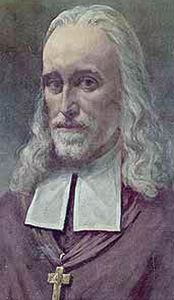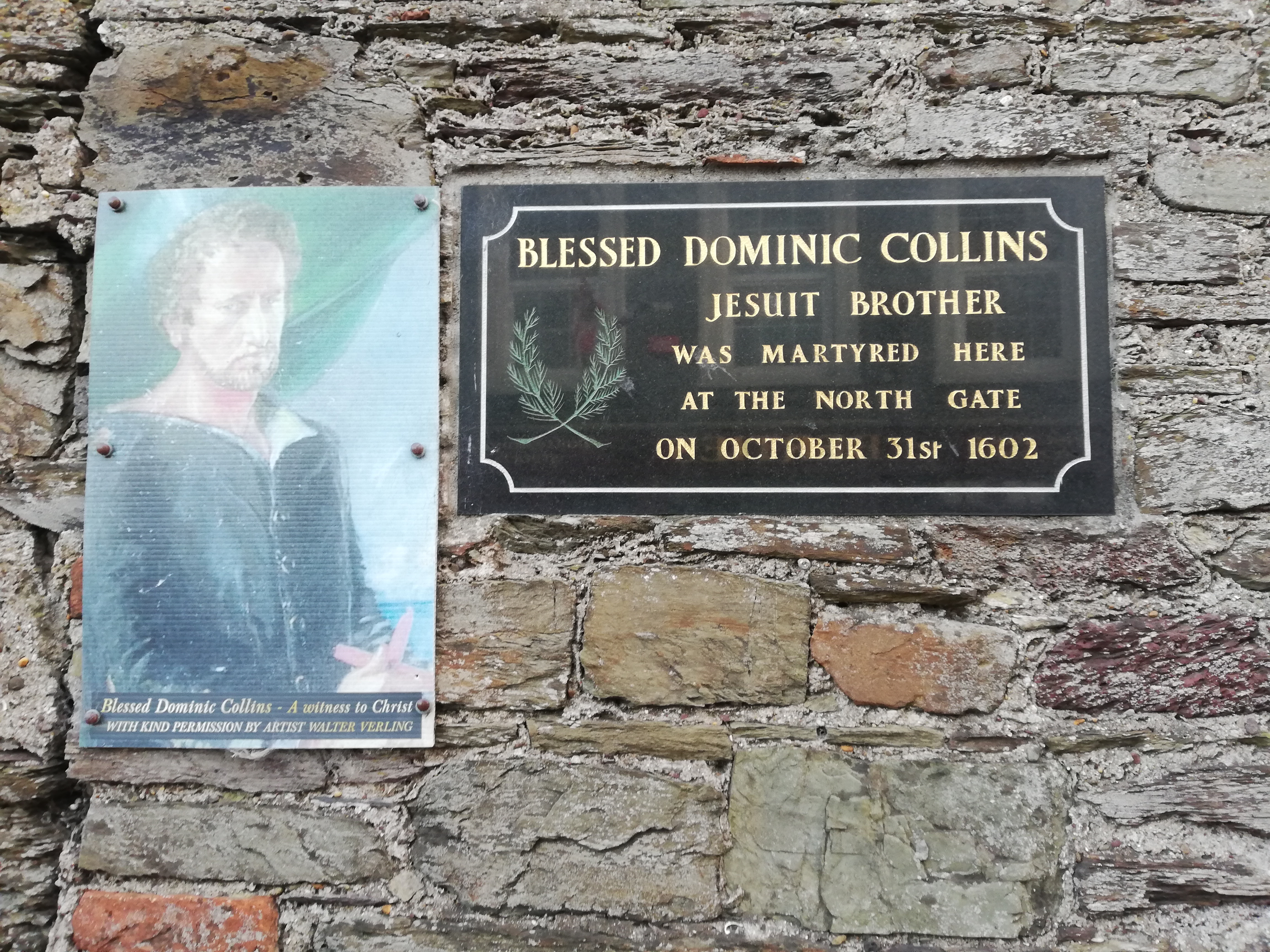|
Irish Martyrs
Irish Catholic Martyrs () were 24 Irish men and women who have been beatified or canonized for dying for their Catholic faith between 1537 and 1681 in Ireland. The canonisation of Oliver Plunkett in 1975 brought an awareness of the others who died for the Catholic faith in the 16th and 17th centuries. On 22 September 1992 Pope John Paul II proclaimed a representative group from Ireland as martyrs and beatified them. Individuals formally recognized Canonized 12 October 1975 by Pope Paul VI. * Oliver Plunkett, Archbishop of Armagh, 1 July 1681 at Tyburn, London; beatified 1920 Beatified 15 December 1929 by Pope Pius XI. * John Carey (alias Terence Carey) and Patrick Salmon, laymen, 4 July 1594 at Dorchester, England * John Cornelius, Jesuit priest, 4 July 1594 at Dorchester, England * John Roche, layman, 30 August 1588 at Tyburn, England 22 November 1987 by Pope John Paul II. * Charles Mahoney (alias Meehan), Franciscan, 21 August 1679, Ruthin, Wales 27 ... [...More Info...] [...Related Items...] OR: [Wikipedia] [Google] [Baidu] |
Monarchy Of England
The monarchy of the United Kingdom, commonly referred to as the British monarchy, is the constitutional form of government by which a hereditary sovereign reigns as the head of state of the United Kingdom, the Crown Dependencies (the Bailiwick of Guernsey, the Bailiwick of Jersey and the Isle of Man) and the British Overseas Territories. The current monarch is King Charles III, who ascended the throne on 8 September 2022, upon the death of his mother, Queen Elizabeth II. The monarch and their immediate family undertake various official, ceremonial, diplomatic and representational duties. As the monarchy is constitutional, the monarch is limited to functions such as bestowing honours and appointing the prime minister, which are performed in a non-partisan manner. The sovereign is also able to comment on draft laws which directly affect the monarchy. The monarch is also Head of the British Armed Forces. Though the ultimate executive authority over the government is still for ... [...More Info...] [...Related Items...] OR: [Wikipedia] [Google] [Baidu] |
John Roche (martyr)
John Roche (also known as John Neele or Neale) was a Catholic martyr, born in Ireland, who died in London, England on 30 August 1588. Life He helped Margaret Ward arrange the escape of Richard Watson from Bridewell Prison when the boatman she had originally asked to help her refused to do so. Roche exchanged clothes with the prisoner and was arrested in his place. Offered his freedom if he would ask Queen Elizabeth I's pardon and promise to attend a Protestant church, he refused, and was hanged at Tyburn, London on 30 August 1588, along with Ward, Edward Shelley, Richard Martin, and Richard Leigh and Richard Lloyd (alias Flower). Veneration Pope Pius XI beatified Roche in 1929. A school in the London Borough of Tower Hamlets was named after him. Iconography Usually shown in working-class Elizabethan The Elizabethan era is the epoch in the Tudor period of the history of England during the reign of Queen Elizabeth I (1558–1603). Historians often depict it as ... [...More Info...] [...Related Items...] OR: [Wikipedia] [Google] [Baidu] |
Lay Brother
Lay brother is a largely extinct term referring to religious brothers, particularly in the Catholic Church, who focused upon manual service and secular matters, and were distinguished from choir monks or friars in that they did not pray in choir, and from clerics in that they were not in possession of (or preparing for) holy orders. In female religious institutes, the equivalent role is the lay sister. Lay brother and lay sisters roles were originally created to allow those who were skilled in particular crafts or did not have the required education to learn Latin and to study. History “In early Western monasticism, there was no distinction between lay and choir religious. The majority of St. Benedict's monks were not clerics, and all performed manual labour, the word ''conversi'' being used only to designate those who had received the habit late in life, to distinguish them from the '' oblati'' and ''nutriti''. But, by the beginning of the 11th century, the time devoted to ... [...More Info...] [...Related Items...] OR: [Wikipedia] [Google] [Baidu] |
Dominic Collins
Dominic Collins (; 1566 – 31 October 1602) was an Irish Jesuit lay brother, an ex-soldier, who died for his Catholic faith. He was beatified as a martyr by Pope John Paul II on 27 September 1992. Life Collins was born in 1566 of a prominent merchant family in Youghal, County Cork, in the Kingdom of Ireland, His father and brother both served as mayors of the town. In 1586 he went to Nantes, France, where he worked for three years as a servant in various hostelries in Brittany, to acquire a horse and to join the cavalry. In 1589 he joined the forces of the Catholic League led by Philippe Emmanuel, Duke of Mercœur, at war against the Huguenots of Brittany. He was soon promoted to the rank of captain (under the name of ''La Branche''), and was appointed military governor of territory taken from the Huguenots. Collins went to Spain with a letter of recommendation for King Philip II, whose service he entered. He transferred to the Spanish army and was stationed in the garrison ... [...More Info...] [...Related Items...] OR: [Wikipedia] [Google] [Baidu] |
Second Desmond Rebellion
The Second Desmond Rebellion (1579–1583) was the more widespread and bloody of the two Desmond Rebellions in Ireland launched by the FitzGerald Dynasty of Desmond in Munster against English rule. The second rebellion began in July 1579 when James FitzMaurice FitzGerald landed in Ireland with a force of Papal troops, triggering an insurrection across the south of Ireland on the part of the Desmond dynasty, their allies, and others who were dissatisfied for various reasons with English government of the country. The rebellion ended with the 1583 death of Gerald FitzGerald, 14th Earl of Desmond, and the defeat of the rebels. The rebellion was in equal part a protest by feudal lords against the intrusion of central government into their domains; a conservative Irish reaction to English policies that were altering traditional Gaelic society; and a religious conflict, in which the rebels claimed that they were upholding Catholicism against a Protestant queen who had been pronounce ... [...More Info...] [...Related Items...] OR: [Wikipedia] [Google] [Baidu] |
Clonmel
Clonmel () is the county town and largest settlement of County Tipperary, Republic of Ireland, Ireland. The town is noted in Irish history for its resistance to the Cromwellian conquest of Ireland, Cromwellian army which sacked the towns of Drogheda and Wexford. With the exception of the townland of Suir Island, most of the borough is situated in the Civil parishes in Ireland, civil parish of "St Mary's" which is part of the ancient Barony (Ireland), barony of Iffa and Offa East. Population The 2016 Census used a new boundary created by the Central Statistics Office (Ireland), Central Statistics Office (CSO) to define the town of Clonmel and Environs resulting in a population figure of 17,140. This new boundary omitted part of the Clonmel Borough Boundary which the CSO had defined as Legal Town for the 2011 census 11.55 km/sq. All of the 2011 census CSO environs in Co Waterford have been omitted as well as parts of CSO environs of Clonmel in Co Tipperary. The CSO as part of ... [...More Info...] [...Related Items...] OR: [Wikipedia] [Google] [Baidu] |
Gerald FitzGerald, 14th Earl Of Desmond
Gerald FitzGerald, 14th Earl of Desmond ( – 1583), also counted as 15th or 16th, owned large part of the Irish province of Munster. In 1565 he fought the private Battle of Affane against his neighbours, the Butlers. After this, he was for some time detained in the Tower of London. Though the First Desmond Rebellion took place in his absence, he led the Second Desmond Rebellion from 1579 to his death and was therefore called the Rebel Earl. He was attainted in 1582 and went into hiding but was hunted down and killed. Birth and origins Gerald was born about 1533. He was the eldest son of James FitzJohn FitzGerald by his second wife, More O'Carroll. As his father's name was James, he was also, after the Norman patronymic manner, called "fitz James". His full name was, therefore: "Gerald FitzJames FitzGerald". His father was the 13th (or 14th or 15th) Earl of Desmond. His father had married as his first wife Joan Roche, his grandniece and had a son from her whose name was Thom ... [...More Info...] [...Related Items...] OR: [Wikipedia] [Google] [Baidu] |
Muiris Mac Ionrachtaigh
Muiris Mac Ionrachtaigh, anglicised as Maurice MacKenraghty (executed 30 April 1585, Clonmel, County Tipperary) was an Irish Roman Catholic priest and one of the Irish Catholic Martyrs. He was beatified in 1992. Life Although the exact date of his birth remains unknown, Muiris Mac Ionrachtaigh, was born at Kilmallock ( ga, Cill Mocheallóg), which was "a prosperous walled town in the Desmond lands in County Limerick". His father, Tomás Mac Ionrachtaigh ("Thomas MacKenraghty"), was a goldsmith and silversmith who was originally from the civil barony of Irraghticonnor. The MacKenraghty family were full citizens of the town of Kilmallock and probably also enjoyed the patronage of the Earl of Desmond. Edited by Patrick J. Cornish and Benignus Millet (2005), ''The Irish Martyrs'', Four Courts Press, Dublin. Page 86. Mac Ionrachtaigh embraced the ecclesiastical state, studied abroad, and graduated bachelor in theology. Returning to Ireland, he became chaplain to Gerald FitzGerald, 15 ... [...More Info...] [...Related Items...] OR: [Wikipedia] [Google] [Baidu] |
Dermot O'Hurley
Dermot O'Hurley (c. 1530 – 19 or 20 June 1584)—also ''Dermod or Dermond O'Hurley'': ga, Diarmaid Ó hUrthuile—was the Roman Catholic Archbishop of Cashel in Ireland during the reign of Elizabeth I, who was put to death for treason. He is one of the most celebrated of the 24 formally recognized Irish Catholic Martyrs, and was beatified by Pope John Paul II on 27 September 1992. Early life O'Hurley was born into the Gaelic nobility of Ireland, either in or near Emly, County Tipperary, around the year 1530. His father, William, was the O'Hurley clan's Chief of the Name and steward to James FitzGerald, 14th Earl of Desmond. Dermot's mother was Honora O'Brien, a descendant of the O'Brien dynasty. Both sides of the Archbishop's family claimed descent from the Dál gCais, one of the most powerful Irish clans in Munster's history. The future Archbishop had one sister named Honora O'Hurley. He also had much younger brother named Andrew O'Hurley, whom, as of 1642, was ove ... [...More Info...] [...Related Items...] OR: [Wikipedia] [Google] [Baidu] |
Margaret Ball
Margaret Ball (1515–1584) was a prominent member of 16th-century Irish society, who, despite being the widow of a Lord Mayor of Dublin, was arrested for her adherence to the Catholic faith and died of deprivation in the dungeons of Dublin Castle. She was declared a martyr for the faith by the Catholic Church and beatified in 1992, one of a group of 17 Irish Catholic Martyrs. Early life She was born Margaret Bermingham in Corballis, a townland now part of the village of Skryne in County Meath, where her father, Nicholas, had purchased a farm when he emigrated from England. The family later became politically active; her brother, William Bermingham, protested in London against Earl Thomas Radclyffe, when he imposed the Protestant Reformation on behalf of the boy-king Edward VI. When she was 16 years old, Margaret Bermingham married Bartholomew Ball, an alderman of the City of Dublin, whose wealthy family operated the bridge over the River Dodder, which is still known as Ballsbr ... [...More Info...] [...Related Items...] OR: [Wikipedia] [Google] [Baidu] |
Wexford Martyrs
The Wexford Martyrs were Matthew Lambert, Robert Myler, Edward Cheevers, Patrick Cavanagh (Irish language, Irish: Pádraigh Caomhánach), John O'Lahy, and another martyr whose name is unknown. In 1581, they were found guilty of treason for aiding in the escape of James Eustace, 3rd Viscount Baltinglass; for refusing to take the Oath of Supremacy which declared Elizabeth I of England to be the head of the Church; and for conveying a Jesuit order, Jesuit and other Catholic priests and laymen out of Ireland. On 5 July 1581, they were hanged, drawn and quartered in Wexford, Republic of Ireland, Ireland. They were subsequently Beatification, beatified by Pope John Paul II. Background In the The Pale, Pale the predominant religion was Catholic, and the Catholics saw a growing threat from the Protestant-dominated government, a perception supported by their marked decline in participation within the kingdom's government. English-born Protestants increasingly occupied positions of author ... [...More Info...] [...Related Items...] OR: [Wikipedia] [Google] [Baidu] |
Patrick O'Hely
Patrick O'Hely ( ga, Pádraig Ó hÉilí) (born between 1543 - 1546, died 31 August, 1579) was an Irish Roman Catholic bishop of Mayo, Ireland, who was executed by the English secular authorities. Biography Born in Dromahair, County Leitrim, and a native of Connacht, Patrick O'Hely joined the Franciscans at an early age. Four years after his profession he was sent to the Spanish University of Alcalá, where he surpassed his contemporaries in sacred studies. Summoned to Rome, he was promoted in 1576 to the bishopric of Mayo, later merged in the archbishopric of Tuam. Pope Gregory XIII empowered him to officiate in adjoining dioceses, if no Catholic bishop were at hand, and supplied him generously with money. At Paris he took part in public disputations at the Sorbonne university, amazing his hearers by his mastery of patristic and controversial theology, as well as of Scotist philosophy. In autumn, 1579, he sailed from Brittany and arrived off the coast of Kerry after James ... [...More Info...] [...Related Items...] OR: [Wikipedia] [Google] [Baidu] |







